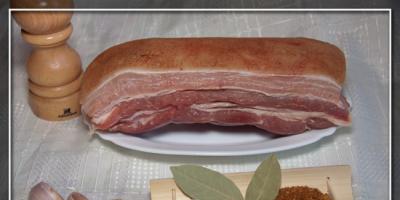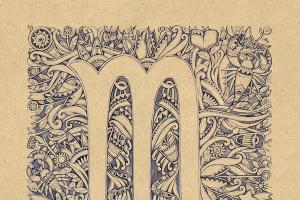Finding out or at least seeing a photo of how a modern sewing machine works is not only educational, but also useful. Be sure to read this series of articles dedicated to repairing modern household sewing machines. Visual representation of the device sewing machine will help you do right choice when purchasing it, and will also make you treat it more carefully later.
It is quite difficult to disassemble a modern sewing machine yourself, but in most cases you will not have to do this. But there are still cases when you have to disassemble the sewing machine yourself. For example, when you need to replace an electric drive, a stitch does not form, the needle breaks, etc., and there is no way to go to a workshop, since there is simply none in your city or town.
In this article you will learn how to properly disassemble (remove) plastic lids a modern household sewing machine, an ordinary inexpensive model from Brother, Janome or any other.
1. What tools are needed

Almost all models of modern household machines economy class are assembled in China and therefore in order to disconnect the plastic parts of the case you only need Phillips screwdrivers. One screwdriver should have a Phillips slot for medium-sized screws and one a little more powerful, even with a flat slot.
Screws on cars made in Europe (sometimes made in Taiwan) often have some peculiarity. They can only be unscrewed with a special screwdriver (star) with a special slot. First, look at what kind of screwdriver you can use to unscrew the housing mount; you may have to buy one specially for this in the store.
This photo shows the types of modern screwdrivers and screws. By the way, we will be disassembling the sewing machine in the foreground. It's called "Dragonfly" - China. Its body is assembled with ordinary cross-shaped screws.
2. Before disassembling the machine

First, remove all parts that do not require special tools. Start with the removable table, then remove the tab. Remove the needle plate. To do this, use a flat-head screwdriver to unscrew just one screw (sometimes two). Naturally, you need to pull out the bobbin and plastic hook or bobbin case, remove the spool, and to avoid injury, it doesn’t hurt to remove the needle.
Now you need to unscrew the screw indicated by the arrow in the photo and carefully remove the front cover. There is a special latch at the top of the lid; you need to disengage it before “pulling it out” by force.
All screws do not need to be put in one “pile”. When you start putting it back together, it will be difficult for you to determine which screw was placed where. Therefore, mark them in any way convenient for you. For example, you can place a piece of paper with a note next to each screw(s).
3. We begin to disassemble the sewing machine

Now we will begin to disassemble the sewing machine, or rather, disconnect its plastic body, consisting of two halves. But first, remove the shuttle compartment cover. To do this, unscrew the screws indicated by the arrows. Just like the front cover, this part, in addition to screws, is also attached with latches. To loosen them, you need to insert a screwdriver into the slot and try to gently move the cover to the left. WITH reverse side where the handwheel is located, remove the stitch selection knob. Just pull it hard to the right. Immediately pay attention to how it stood, so that it would be easier to install it back.

And two more types of fastenings are located at the bottom of the machine body. For many models of sewing machines, rubber feet at the bottom of the body are also used to secure the plastic body to the metal frame sewing machine. In any case, in this model of the machine the two rear legs serve as such fastenings. But since we will only be removing the front part of the case, unscrew only one leg (the upper right one).
For all sewing machines of this class, it is necessary to release the fastening indicated in the photo by the letter (A). Moreover, both screws do not need to be unscrewed; it is enough to release only the cover front side. In this case, you need to unscrew the top screw.
4. Unscrew the most difficult to reach screw

The very last, but most inconspicuous screw (B) remains. It is located deep in the front part of the machine. Even with high magnification it is not visible in the photo. The screw that is so clearly visible does not need to be unscrewed. This is the upper thread tensioner mount. By the way, it remains in place after removing the cover. Take this moment into account and do not try to remove it. Actually, it is not difficult to unscrew the screw itself; it will be much more difficult to put it back. Therefore, hold the screwdriver on the magnet for a while, this will help you later.
Now you can remove the front cover, although it should be noted that other models may have an additional fastener, but the principle is approximately the same. Look carefully, your machine may have an additional mount in the lower part of the body. It happens that the fastening of the covers is hidden by plugs. Using a knife blade, pry the plug on the back of the machine and make sure there is no additional fastening there.
By the way, it is with the help of a knife that you will have to remove the cover, since in addition to the screws, there are latches at the ends of the covers. Place the blade of a knife between the ladles of the body and carefully try to push them apart, moving the latches. It’s just difficult to immediately determine where they are located, so be patient if you really decide that you definitely need to disassemble the sewing machine.
5. How to separate two parts of the case

This is roughly the “picture” you will see when you can disassemble your sewing machine. It's probably worth noting that the hardest part is not finding all the screws that secure the covers to the case and to each other. It is very difficult to carefully remove the covers and disconnect their latches. If you do this hastily, you can damage the plastic, which will not only ruin appearance machines, but it will also interfere with work. Rough parts in the machine sleeve area will cling to fabrics and even form puffs.
It is important to firmly decide whether you need to disassemble the machine yourself or not. If there is no other option, then be patient and attentive. Well, why we need to disassemble it, we have already mentioned above, but we will look at it in more detail in other articles.
How does a modern household electric sewing machine work? Basic malfunctions of components and mechanisms.
Sometimes it becomes necessary to disassemble the sewing machine, or rather remove the plastic body of the machine in order to gain access to some components. Such a need arises very rarely and it arises only when it is necessary to replace the sewing machine motor or drive belt.
Just like the pedal, the electric motor should not be repaired yourself. Moreover, there is nothing to repair there. The engine either works or it doesn't. If it does not work, and you know for sure that there is no other reason for this, then it needs to be replaced.
Such a “trifle” as winding thread on a bobbin often creates a lot of inconvenience. For some reason, it is not always possible to do this quickly and “without problems.” Let's figure out why it is sometimes difficult to wind thread onto a bobbin and what needs to be done to fix minor damage to the winder.
The master's opinion about which sewing machine is the best. Learn more about a used Rubin sewing machine and other old Veritas models.
Sometimes, you need to remove the overlock covers and lubricate all the rubbing parts inside the case. What you need to pay attention to and how to do it yourself.
A sewing machine is an indispensable piece of equipment in every home. This applies equally to both old and new models. Don't be afraid to get started - the main thing is to know how to properly set up your sewing machine.
It is quite possible to carry out the debugging procedure for many sewing machines with your own hands - the instructions supplied with the equipment will help with this. And although many devices have the same principle of operation, the methods of regulation may differ.
Preparing for work
It is important to properly prepare the device for use. In the majority modern models special help with setup adjuster wheels, but sometimes you have to work manually. To do this, just adjust the position of the parts.

First, we set up the spring that presses the thread (winding onto the bobbin) - it is tightened so that the thread is prevented from unwinding by the bobbin cap. You need to achieve the required tension. The top thread runs through the entire system. During the process, the following thread movement algorithm is observed:
- metal ears;
- tension regulator;
- thread take-up lever hole;
- staples;
- needle eye.

Now let's deal with thread tension in a sewing machine. Correct installation will be provided by mechanisms located on the end panel for the lower thread and in the interlinear screw of the shuttle for the upper thread. The latter is done like this: disc-shaped shuttle washers are compressed by a screw - this is what should be tightened to achieve the desired result.

Afterwards the result is checked on a small piece of material:
- hanging loops indicate that they have overdone the tension on the top;
- in an even seam, nodules are examined (ideal ones are in the middle and cannot be palpated).

Relevant to work with foot pressure. Adjustment occurs with a spring. It is important to find the optimal “golden mean”:
- the large impact of this part on the material will displace the layers folded together, make it difficult to move and may even tear the fabric;
- weak pressure will produce an incorrect seam.
Before working on this part, you should definitely pay attention to the thickness of the material. In particularly “thick” cases, it is recommended to raise the foot up to 1.2 cm. And the thicker the fabric, the harder the foot should press.
Pedal operation value
In machines with an electric drive, the normal functioning of the device can be disrupted by deficiencies in the drive. The pedal contains speed regulator - if it breaks down, it may behave abnormally, for example, it may jump out of place even when pressed lightly.

You can fix the problem yourself: the graphite “tablets” are compressed together through a spring by a pressure lever, the resistance decreases and the rotation speed increases. In this case, it is enough to disassemble, clean and reassemble.
However, if even after this the machine does not restore normal operation of the speed controller, it means that it needs to be changed (most likely, the contacts have oxidized).
Other Important Points
It is worth paying attention to needle holder– the needle in it should be inserted firmly all the way with the large groove turned to the left. Does the machine have a tooth height adjuster? Then, with its help, it will be necessary to set the optimal height.
Be sure to pay attention to stitch length:
- 1-2 mm for thin thread;
- at least 3 mm for thick ones.
It is important and shuttle position: for example, Astralux 235 (like many other models of the brand) will have it with vertical installation, and setting up a Janome brand sewing machine involves working with a horizontally positioned shuttle. The following video instructions will help you understand this issue in more detail:
How to set up old-style sewing machines
You might be surprised how well old hand sewing techniques can sew. Having studied the intricacies of tuning, you can revive such a unit and enjoy the fruits of your labors. First of all, you need to familiarize yourself with operating principle of the device like a Singer or Podolsk sewing machine.
- The right side is represented by a wheel (another name is a winder). It is twisted by hand. The stitch length is adjusted using a lever located nearby.
- The shuttle can be found on the left, next to the presser foot with a needle.
- There are slats on the working surface that will advance the material while sewing.
How to properly set up a long-lived sewing machine? First they are selected needle and thread numbers– this will help you work with different types of fabric. Next, let's worry about quality stitching:
- regulation of the tensioned thread from below is similar to that of Janome; it can be done using a screw on the bobbin case;
- a special regulator tensions the upper thread (it is located near the lever that lowers the presser foot).
Before starting work, be sure to study the settings!
Gull
Setting up the “Chaika” sewing machine includes several important points. The main thing here is to install the needle and thread correctly from the very beginning. It all depends on the location of the latter.

In a relationship top thread you need to complete the following mandatory steps.
- Turn the knob to set the thread take-up mechanism in the highest position.
- It is inserted into its holder all the way - in this case, it should be turned with the flat side towards the rod with the foot. It is then secured with a screw.
- Now let’s start installing the spool of thread - we’ll place it on the intended rod.
- The thread will follow this path: thread guide - friction washers - thread tensioner - thread guide - needle holder. The final destination is the eye of the needle.
U bobbin thread the process will be a little simpler: it is wound onto a bobbin. The latter is inserted into the cap and brought out. The cap is inserted until a characteristic click sound appears. The handle of the machine is turned to adjust the thread tension, each thread is tucked under the presser foot.
Eat important rules when using the unit.
- Before starting work, the presser foot and needle are lowered.
- We turn the handle, directing it towards ourselves.
- The machine is lubricated with the oil intended for this purpose.
- For work, only a fabric base suitable for all types of stitches is used.
- The Seagull has a disc with 4 positions. With thick fabric, these teeth will protrude strongly, but will hide during embroidery.

Podolsk
What many of today’s professionals like about the Podolsk brand of sewing machine is that this device is capable of sewing fairly dense and thick fabrics. You just need to configure it to work. First should be correct thread.
- The Podolsk winding device is located at the back, near the flywheel itself. The thread tension device itself is also connected to the winder (from the right corner of the platform). It is important to turn off the handwheel at this time so that the sewing part does not work. To do this, just turn the friction screw towards yourself.
- The bobbin is installed on the winder, and the thread spool is installed on the corresponding rod.
- The thread from the spool is passed under the washer at the tension device and directed upward to the bobbin.
- Now the frame of the winder goes down: at the pulley, the rim comes into contact with the flywheel.
- It is necessary to hold the free end of the thread until winding is completed. Correctly performed actions will help to do this smoothly.

The bobbin is inserted into the cap so that there is an oblique slot at the top. A thread will go through it to the spring, which at the end will go out again through the slot. All this is installed in the device, the free end of the thread is brought out. The shuttle device can be closed.
The needle is being installed with the needle bar in the upper position. The flat part of the bulb faces to the left, and the long groove of the blade faces to the right. The upper part of the thread is wound when the handwheel is turned towards you and the thread pulling lever is set to the highest position. All threading goes from the right and then to the left - from the spool to the eye of the needle. The lower thread is pulled outward by turning the handwheel - this will allow the needle to lower and grab the thread from the shuttle, and then rise up with it.
- The flywheel should be rotated towards you - from the working person. This will prevent the thread from getting tangled in the shuttle.
- When not in use, the presser foot should be raised.
- Before starting the device, there should already be fabric under the presser foot - “idling work” will dull the teeth.
- You cannot pull or push the working material - there is a risk that the needle will break.
- Close the plate tightly over the shuttle.
- "Podolsk" has 3 degrees of adjustment of teeth.
There is one more general advice for all old cars. New models have bobbin spring, but in outdated ones there is no such thing. One trick will help with setup: cut a circle out of fabric or thin paper, smaller in diameter than the bobbin. An axial hole is cut in its center. The circle is inserted into the bobbin case, sewing machine oil is dripped onto it, and then the bobbin is inserted there.
Preventive measures for the maintenance of devices
In order to resort to the setup procedure less often, it is enough to follow the simplest preventive measures for equipment care.

- Car needs lubrication once every six months to a year, this should only be done with a special means.
- But equipment must be protected from dust much more often. The procedure is simple: upon completion of the work, it is swept away from the surface, the shuttle cover and the needle plate.
- After sewing is completed, a square of some kind is placed under the presser foot. thick paper. The presser foot and needle are lowered all the way.
- Before you hide the machine, you need to check whether there are any torn threads or fabrics left in it.
- Unused device kept under cover.
- For a machine with a drive, it is important to pay attention to the condition of the pedal and wire. If the wiring is constantly twisted, it will simply break inside.
19 May 2011
www.site
A. Removing the top cover

2. Close the protective cover, lift the handle and remove the screw to the left of the handle.

3. To remove the cover, press the latch inward at the base of the handle and remove the cover and handle.

B. Removing the side cover

2. Remove the screws from the bottom of the machine A And B. Screw B the smaller of the 2 screws located there.

3. Position the machine upright, and remove the plug from the side cover below the flywheel using a small screwdriver.

4. Remove the screw WITH.


C. Verification
1. After checking the relative position of the parts, look at the upper shaft from the side of the right support, between the support and the shaft limit washer. Check for any darkening or scuffing of the shaft. If there is any darkening, the shaft and support bushing must be replaced.

2. Loosen the locking screw on the left end of the upper shaft. Try to move the shaft from left to right. If the shaft does not move, this also indicates that the shaft and bushing must be replaced.

D. Shaft replacement
1. To begin the shaft replacement procedure, place the upper counterweight shaft in front of you so that you can access the locking screw and the positioning washer screw. Note that the single blade on the positioning washer is on the right (remember the position). Remove the fixing screw and the positioning washer screw.


3. Remove the screws A And IN.

4. Remove the thread drive unit (thread take-up unit) and place it behind the machine.


6. Using a hammer and 3.0mm core, remove the pin from the counterweight.

7. Position impact screwdriver or a core at the end of the upper shaft in counterweight (see inset). Knock out the shaft to the right about 1.5 cm.



10. Remove the upper shaft. Remove and set aside the retainer, retainer screw, positioning washer and its screw.

11. Lightly tap and use a small screwdriver to knock out the upper shaft bushing towards inside cars. Be careful not to damage the cast parts seats wherein.

12. Install new bushings, install the bushings with the rounded end into the mounting hole...

13. ...make sure the bushing is flush with the seat casting.

14. Remove the retainer, bushing and counterweight onto the new shaft.

15. Remove the flywheel by pulling it out.


17. Remove the balance wheel and the metal and plastic washers.

18. Remove the belt pulley by turning it clockwise and pulling it out.

19. Remove the clutch springs from either end of the shaft ( A) or belt pulley ( B) by rotating clockwise and pulling out.

20. Use a 2.5 mm screwdriver or hexagon to drive out the upper camshaft camshaft pulley pin and remove the pulley, washers and clutch shaft bushing.


22. Remove the shaft from the ring coupling. Use an impact screwdriver...

23. Install the pulley onto the new shaft using a 1.5mm hex driver.

24. Install the oil seal washers, clutch bushing and ring coupling on the right side of the shaft.

25. Hold the clutch bushing with a 2.5mm hex screwdriver and position it so that the bushing moves no more than 0.5mm from left to right. Then tighten the 2 clutch screws.

26. Install the clutch springs inside the clutch bushing by rotating the springs clockwise. The spring must be installed in the groove of the clutch bushing.

27. Install the belt pulley by rotating it clockwise until it stops.

28. Install the plastic washer, followed by the metal washer. Install the balance wheel with the flat side facing the belt pulley.


30. Install the flywheel, making sure that the tabs on the flywheel fit into the slots on the balance wheel.

31. Insert the left end of the upper shaft through the belt into the mounting sleeve.

32. Thread the end of the upper shaft through the positioning washer, clamp, seal and counterweight. Remember that the single blade of the positioning washer should be on the right.


34. Move the release lever toward the front of the machine to protect it from impact from the clutch bushing.

35. Install the counterweight pin through the shaft (a 1.5mm hexagonal screwdriver can be used to strike). If the pin does not fit through the shaft, remove the pin, rotate the shaft 180 degrees, and reinstall the pin.

36. Position the machine with the counterweight facing forward. Move the shaft to the right, slide the lock to the left and tighten the lock screw.

37. Place the positioning washer in such a position that it is positioned with a single blade to the right and up. Install the washer and screw, move the positioning washer to the right or left so that the blades pass through the sensor without hitting it. Tighten the screw.

38. Install the winder with screw. Make sure the end of the spring fits into the molding hole as shown in the picture.



41. Place the white thread guide between the two black parts of the thread holder.

42. Secure the thread drive unit with screws A and B.

Settings
1. Remove the presser foot, needle and spool cap plate. Loosen the 2 drive pulley lower shaft screws (2.5mm).

2. Before adjusting the hook, make sure the presser foot is in the down position. Insert the needle from the left.

3. Adjust the hook and needle so that the nose of the hook is approximately 1 mm above the eye of the needle in the left needle position.

4. Tighten the 2 drive pulley lower shaft screws (2.5mm).
5. Install the bobbin case, needle plate and presser foot. Plug in the power cord and turn on the machine. Select a Zig Zag stitch (stitch #8). Turn the handwheel so that the needle begins to swing left and right. The needle should be 7.8 to 8.2 mm above the surface of the needle plate when rolling.

6. As a reference point, the needle should swing at the level of the presser foot when the presser foot is in the raised position.

7. To adjust, loosen the upper shaft positioning washer screw.

8. Turn the positioning washer in direction A if the needle tip is more than 8.2 mm above the needle plate and in direction B if the needle tip is less than 7.8 mm above the needle plate. Tighten the screw.

Installing the Side Cover
3. From the bottom of the machine, install screws A and B. Screw B is the smaller of the 2 screws located there.
Installing the Top Cover
1. To install the cover, press inward at the base of the handle and install the cover together with the handle.

Good luck with the renovation!
All the best, writeto © 2011
The famous Japanese brand Janome is famous for the excellent quality of its products. More than 300 models of sewing machines alone are produced. About a hundred countries have existing contracts for the supply of Janome sewing machines.
By this indicator one can judge the quality of manufactured products. Every day, thousands of machines leave the assembly lines of enterprises, and the stable demand for them confirms the amazing manufacturability and functionality of the devices. In addition to ready-made machines, enterprises also produce spare parts for Janome sewing machines, including even .
Like all Japanese technology, sewing machines of this brand are very reliable and of high quality in terms of manufacturing. However, breakdowns happen to them too. The main reasons for them are negligence in performing work and lack of proper care.
Even the best equipment can become unusable if it is not provided with proper operating conditions. Below we will look typical breakdowns, in which it becomes necessary to repair Janome sewing machines.
2 Caring for your Janome sewing machine
Any equipment needs maintenance. This fully applies to sewing machines. With constant work, regular preventive maintenance is also required.
If you begin to notice that the machine is starting to malfunction, make noise, skip stitches, stitch unevenly, or give out some other surprises, then this indicates the need for cleaning and subsequent lubrication. It is also possible that the device requires adjustment.
Often you have to adjust the degree of thread tension. In machines of this class (like) such an operation can be performed without difficulty.
If no work is expected in the near future, the machine can be stored. Before doing this, the Janome sewing machine must be cleaned from dust and lubricated.
Any preventative cleaning and lubrication is accompanied by removing the shuttle. After this, using a special brush, all rubbing surfaces are cleaned of lint and fabric residues. Oil is poured into the technological holes. Rubbing parts are also lubricated.


Places to be lubricated are indicated in the instructions for specific model. It is advisable to lubricate no more than once a month, since excessive lubrication can contribute to the opposite effect. Any remaining grease must be wiped off with a dry cloth.
After this, the shuttle is installed in place, and final assembly cars. If such work is beyond your capabilities, and in your locality there is a service center for Janome sewing machines or just repair of sewing machines, then you can turn to them for service. Otherwise, such preventive measures will have to be carried out independently.
The sewing machine can only be stored in heated rooms with normal humidity. It is unacceptable to leave it in the basement, garage or other rooms in the absence of heating.
And don’t forget, if you are using a sewing machine, you also need to diagnose it for malfunctions regularly.
There are many articles on the site dedicated to repairing sewing machines. However, first of all, these articles are of an informative nature, intended not for amateur craftsmen, but for owners of sewing machines.
From them you will learn how this or that sewing machine works, what breakdowns are possible if you do not follow the operating instructions. And finally, how to perform a simple repair of a sewing machine with your own hands, if it is not possible to go to a workshop.
In this article you will learn how the Janome sewing machine works.
What is the difference between inexpensive models of Janome machines, what kind of breakdowns do they have and whether it is possible to repair it yourself.1. Janome sewing machine with swinging hook
This sewing model Janome machines has a swinging shuttle type. This shuttle is used only by Janome, but also by other sewing machine manufacturers. These are cars with an initial price, which can be bought in the range of 4-5 thousand. They are quite reliable and durable, but there are limits to everything, and after we decided to hem several jeans at once on this particular machine (photo), it ended up in our workshop.
Look at the photo. The arrows indicate the nose of the shuttle and the eye of the needle. You can see that when the nose of the shuttle approaches the needle, the eye of the needle is too high and therefore no stitches are formed. This is a very common failure. In quotes because such a failure occurs when the operating rules of any sewing machine are not followed, and Janome is no exception. This is not even a breakdown, but a violation of the parameters of interaction between the shuttle mechanism and the needle. This happens at a time of excessive load. And doing a finishing stitch on the hem of jeans is just that case. The toothed belt connecting the upper and lower shaft slips onto a tooth and the machine stops forming stitches, although it still works normally. Probably jeans are the biggest enemy of all sewing machine manufacturers. How much they undermine the image of any of them. After all, it is jeans that most often put household sewing machines out of action.
To understand why this happens and why jeans cannot be hemmed at household sewing machines count how many layers of fabric are formed at the roughest place (the junction of the seams). From 9 to 12 layers. Take a needle and try to pierce such an area with a hand needle, it is unlikely to work. Only if you hammer the needle.
2. How to check the interaction of the needle and the nose of the shuttle
But let’s return to our Janome sewing machine and try to figure out how such a failure occurred and whether it can be fixed on our own.
Firstly, it must be said that if the machine stops forming stitches normally, gaps appear, or thread breaks, then look at how the nose of the shuttle interacts with the needle.
Remove the presser foot and needle plate. Lay the machine on its side and remove the upper part of the shuttle stroke so that the shuttle remains in its grooves and is not distorted. Now carefully turn the handwheel and bring the nose of the shuttle to the needle. If you find a picture like the one in this photo, it means that the cause of the malfunction is different and there is no need to disassemble the machine. The photo shows that the nose of the shuttle fits, as it should, 1.5-2mm above the eye of the needle. If the spout is lower than the ear or level with it, it means that we will have to disassemble the body of the machine in order to gain access to the unit we need.
3. How to disassemble a Janome sewing machine
I do not recommend disassembling modern sewing machines. There is nothing complicated about this, but only for those who know how to do it correctly. In any other case, the desire to use a nail puller always arises. Well, it seems like all the screws are unscrewed, but the case does not come apart. Be careful, you can easily break not only the housing mount, but also the required part sewing machine
Each machine uses its own options for attaching the body halves. First you need to carefully study them and discover them. For example, several pieces may be located under the front cover, in the area of the upper thread tensioner, the shuttle mechanism (remove the needle plate).
Further, some of them are hidden under plugs that can be easily removed with a knife blade. What else can I recommend? Well, for example, for this model Janome does not need to remove the levers for switching stitch types. By the way, don't forget about the reverse lever when you put the body back together. In general, for a non-specialist it will be much more difficult not to disassemble it, but to assemble it, keep this in mind. Mark where and what screw was located. And if you don’t have a single extra screw left, then you passed the attentiveness test by 5 points.
4. Janome sewing machine structure
If you are going to buy an inexpensive Janome sewing machine, you can look at these photos that clearly demonstrate its structure. This will help you make the right choice.
In the next paragraph you will find out the reason for the malfunction of this sewing machine.
If the copier is dry, its grooves should be lubricated with thick lubricant.
Check the tension of the electric drive belt. If it is loose, tighten it slightly with the screws that secure the motor to the housing. The belt should not be overtightened; when pressed with a finger, it should bend slightly.
If your machine has problems with the tension of the upper thread, most likely the reason is this knot. Raise and lower the presser foot several times and make sure that this lever works correctly. It may need to be adjusted.
Behind the upper thread tensioner there is a housing securing screw. It's easy to unscrew, but not easy to put back. Place the screwdriver on the magnet for half an hour, and then it will be easier to install it.
The tensioner screws should not be unscrewed when removing the housing cover.
5. Repair of a Janome sewing machine
The cause of the malfunction was in this node, marked with an arrow. Moreover, this was not discovered immediately. Toothed belt. connecting the main shaft to the lower shaft, this model of Janome sewing machine did not have. Instead, a crank mechanism was used. It is quite reliable and can withstand heavy loads, so the search for the cause of the failure was directed in the other direction.
However, it later turned out that while hemming the jeans, the eccentric mounted on the main shaft and transmitting movement to the lower shaft had shifted. As a result, without load, the machine parameters were normal, and no stitching was formed during sewing. The mount for this eccentric is located inside (arrow).
After setting the correct parameters for the interaction of the needle and the nose of the shuttle and then tightening the eccentric fastening (screw), the breakdown was eliminated.
Janome sewing machines
Janome sewing machines have many different models designed for different categories of customers. Eat whole line economy-class sewing machines, affordable and designed for small sewing and repair of clothes at home.
Overlock Janome ArtStyle 4057
The Janome ArtStyle 4057 overlocker performs 3- and 4-thread overlock stitches. Used for overcasting any fabrics, including knitted fabrics.
Which sewing machine should I buy?
An important criterion when buying a sewing machine is its purpose and ease of use. For example, some Janome models have a folding table.
Easy sewing machine repair
This article contains all the typical and simple faults and repair methods for a sewing machine.
Skips in modern sewing machines
Why did a modern household sewing machine suddenly start skipping stitches? The sewing machine repairman explains.
The structure of a modern sewing machine
How does a modern household electric sewing machine work? Basic malfunctions of components and mechanisms.
Which overlocker to buy?
Each sewing company has its own characteristics, but they are more related to engineering solutions for the design of components and mechanisms of sewing machines. The performance indicators of the same model from different manufacturers of sewing machines are approximately the same.
Which carpet to buy
Lockstitch sewing machines can only imitate an overlock stitch. But carpet lockers are capable of not only sewing fabrics, but also grinding them down. Not only that, they can even be used as a cover stitching machine.








